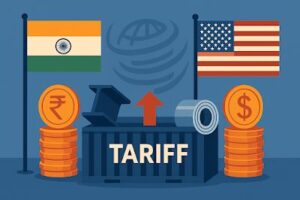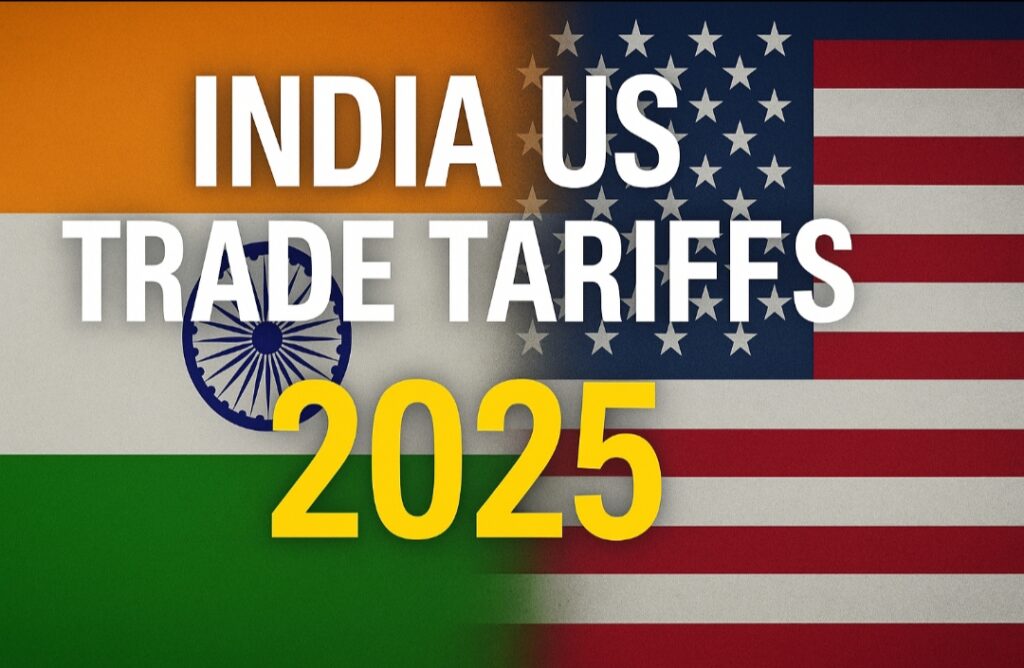India US Trade Tariffs 2025: $48.2 Billion Exports at Risk
In 2025, the United States has announced a steep 50% tariff on $48.2 billion worth of Indian exports. This move has sparked serious concerns among Indian exporters, economists, and policymakers. But what does this really mean for India’s economy, jobs, and global trade relations? Let’s break it down in simple terms.
Understanding the India US Trade Tariff Dispute
The sudden tariff hike is not an isolated event—it’s part of a growing trend of protectionism across the globe. For India, which counts the US as its largest export market, this decision could be a game-changer.
- Political Strategy: The US is using tariffs to reduce its trade deficit.
- Domestic Protection: Protecting American manufacturers against lower-cost Indian imports.
- Global Trend: Part of worldwide protectionist policies affecting emerging economies.

Which Indian Exports Will Suffer Under US Tariffs?
Not all goods are impacted equally. Some key sectors face the highest risks:
- Textiles & Apparel: A backbone of India’s exports, now becoming more expensive in the US.
- Pharmaceuticals: Generic medicines may lose competitiveness due to higher costs.
- Steel & Metals: Already facing earlier duties, now under stricter conditions.
- Agro Products: From spices to rice, Indian farmers and SMEs face pricing challenges.
Impact of US Tariffs on India’s Export Economy
Short-Term Impact on Indian Exporters
Small and medium exporters will find it hard to absorb a 50% cost hike, leading to job cuts, reduced shipments, and squeezed margins.
Long-Term Consequences for Trade Growth
If unresolved, India may see reduced market share in the US, lower foreign exchange inflows, and slower growth in sectors like textiles and pharma. On the positive side, this may push India to explore other regions such as Europe, Africa, and Southeast Asia.
How Can India Respond to US Tariff Hikes?
India cannot afford to rely on one export destination. To counter the challenge, several strategies are being discussed:
- Export Diversification: Targeting markets in Europe, ASEAN, and Africa.
- Value-Added Goods: Upgrading quality and branding to justify higher prices.
- Government Support: Policy-driven export incentives and subsidies.
- Strategic Partnerships: Collaboration with US-based companies to reduce tariff impact.

India US Trade Relations: Challenges and Opportunities
Despite tariffs, India and the US remain strategic partners in technology, energy, and defense. Trade disputes may cause friction, but both countries recognize the importance of maintaining strong economic ties.
Possible Diplomatic Solutions
- Negotiating tariff reductions through bilateral trade agreements.
- India imposing retaliatory tariffs to balance the impact.
- Strengthening regional trade blocs to reduce dependency on the US.
Final Thoughts: The Road Ahead for India’s Exporters
The India US trade tariffs 2025 issue is more than just economics—it’s about jobs, industry competitiveness, and India’s role in global trade. While $48.2 billion of exports are at risk, this could also become a turning point for India to diversify markets and build resilience in its trade strategy.
What do you think? Will India be able to offset these tariff losses by expanding into new markets? Share your thoughts in the comments, and don’t forget to explore our latest insights on global trade and finance.

